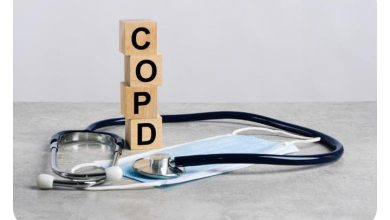Introduction
The ERAS Fellowship Match process represents a crucial juncture in the careers of medical professionals aiming to pursue specialized training. This rigorous and highly competitive endeavor serves as a bridge to advanced clinical knowledge and specialized expertise. In this comprehensive guide, we will navigate the intricate terrain of the ERAS Fellowship Match, providing invaluable insights into each phase of this transformative journey.
Understanding the ERAS Fellowship Match
The ERAS Fellowship Match is a cornerstone of the application process for specialized medical training. This system is designed to streamline the application and selection process, creating a structured pathway for both applicants and program directors. Understanding how the ERAS Fellowship Match operates is essential for any aspiring fellow.
The ERAS Fellowship Match is conducted through the Electronic Residency Application Service (ERAS), a platform familiar to medical professionals from their residency application experience. It aims to align applicants with programs that best fit their career aspirations and program preferences.
The Application Phase

The journey through the ERAS Fellowship Match begins with the application phase. This is where aspiring fellows prepare their materials, aiming for a comprehensive and compelling presentation of their qualifications.
The ERAS Fellowship application cycle usually opens in July each year, with submission deadlines falling around late summer or early fall. To maximize your chances of success, timely and well-prepared applications are crucial. Remember that program directors view punctuality as a measure of professionalism and commitment.
Selecting the Right Programs
In the vast landscape of fellowship programs, finding the ones that align with your career goals and interests can be challenging. However, this crucial step sets the course for your future training and specialization. Careful research and selection of programs can significantly impact your career path.
Consider factors such as program reputation, faculty expertise, clinical and academic offerings, and location when choosing programs. To make well-informed program selections, it’s essential to invest time in learning about the right program choices. You can do this by seeking advice from mentors who have successfully navigated the ERAS Fellowship Match or by exploring trusted resources and blogs dedicated to program selection in your chosen specialty.
Preparing a Standout Application

To stand out in the highly competitive world of fellowship applications, you must craft a standout application. Key documents in your application package include your CV, personal statement, transcripts, and letters of recommendation. Each component plays a vital role in presenting your qualifications to program directors. Explore avoiding mistakes on application, a comprehensive guide dedicated to steering clear of typical errors in your application materials. This invaluable resource offers essential insights to help you fine-tune your documents and steer clear of common pitfalls that could potentially hinder the success of your application.
Your CV should be meticulously curated, highlighting relevant experiences, research, and leadership roles during your residency. Pay close attention to formatting and organization to ensure clarity and professionalism.
The personal statement is your opportunity to convey your passion for your chosen specialty and the program you’re applying to. Avoid clichés and generic statements, instead focus on your unique journey and motivations.
The Review Process
The ERAS Fellowship application review process involves program directors carefully evaluating each applicant’s qualifications and fit with their program. Program directors seek candidates who not only meet the application requirements but also align with the program’s goals and values.
They look for qualities such as dedication, professionalism, clinical aptitude, and a genuine passion for the specialty. Understanding what program directors seek can help you tailor your application and make a lasting impression.
The Interview Phase
Interviews are a significant aspect of the ERAS Fellowship Match. This is where you have the opportunity to showcase your personality, interpersonal skills, and enthusiasm for the program.
Interview invitations typically start arriving in late summer and continue throughout the fall. As you prepare for interviews, practice your responses to common questions and emphasize your passion for the specialty and program. Seeking guidance from experts who specialize in interview preparation can be immensely beneficial during this phase. These experts can provide you with tailored advice and practice sessions, helping you refine your responses and boost your confidence.
Additionally, experts can offer valuable insights into the nuances of interview etiquette, ensuring that you dress professionally, arrive punctually, and maintain a courteous demeanor throughout the interview process. Their expertise can play a pivotal role in helping you make a lasting impression on the interview panel and increase your chances of securing a spot in your desired fellowship program.
Ranking and Match Day
After completing your interviews, you will enter the ranking phase. This is where you list your preferred programs in order of preference. Program directors also submit their rank order lists, indicating their preferred candidates.
The culmination of your efforts comes on Match Day, which usually takes place in March. This is when you discover the outcome of your application—whether you’ve successfully matched with a fellowship program. The anticipation and excitement on Match Day are palpable, marking a significant milestone in your medical career.
Post-Match Transition

Once you’ve successfully matched with a fellowship program, it’s time to prepare for the transition from residency to fellowship. This period may involve logistical adjustments, such as relocating or securing housing. Additionally, it’s a time to reflect on your career path and set goals for your fellowship.
Remember that the ERAS Fellowship Match is a stepping stone toward your desired career path. Use this opportunity to gain specialized expertise, refine your skills, and forge connections with mentors and colleagues who can support your professional growth.
Success Stories and Insights
Throughout your ERAS Fellowship Match journey, you may find inspiration in the success stories of others who have navigated this process. Learning from their experiences and insights can provide valuable guidance as you navigate your own path.
Conclusion
In conclusion, the ERAS Fellowship Match represents a pivotal phase in the careers of medical professionals pursuing specialized training. By understanding the intricacies of each phase, from application to Match Day and beyond, you can approach this process with confidence and preparedness.
The ERAS Fellowship Match is your roadmap to success, leading you toward specialized expertise and fulfilling career opportunities. View it as a transformative journey, and embrace each step with dedication and professionalism. With the right approach, you can navigate this process successfully and embark on a rewarding career path in your chosen specialty, achieving your aspirations and contributing to the world of medicine.




